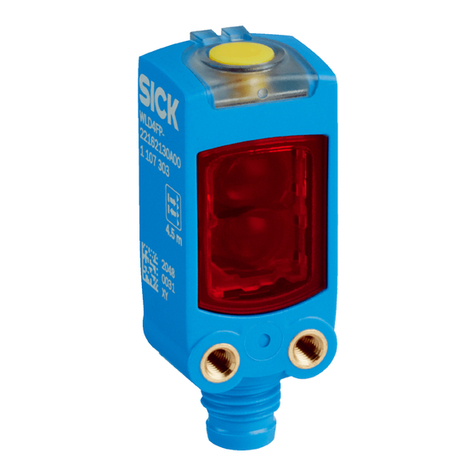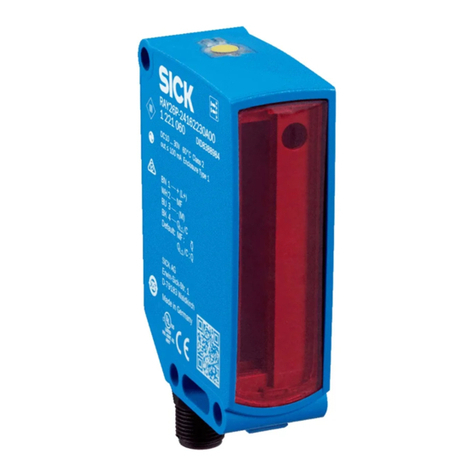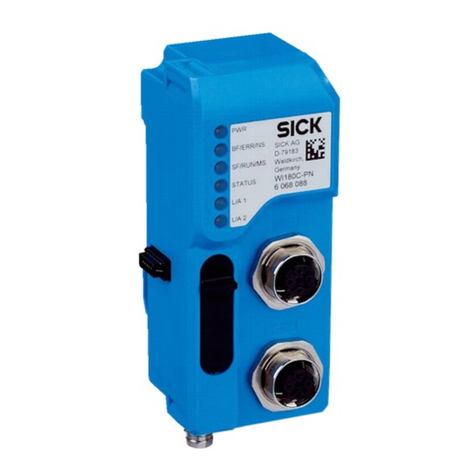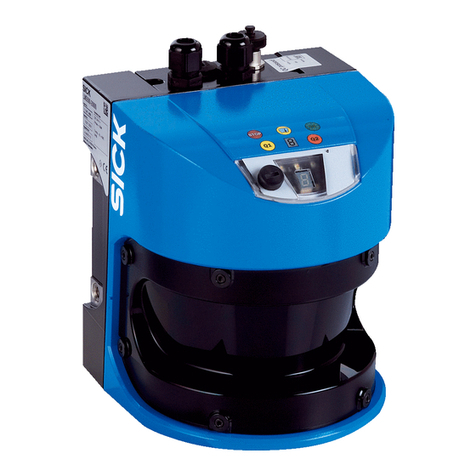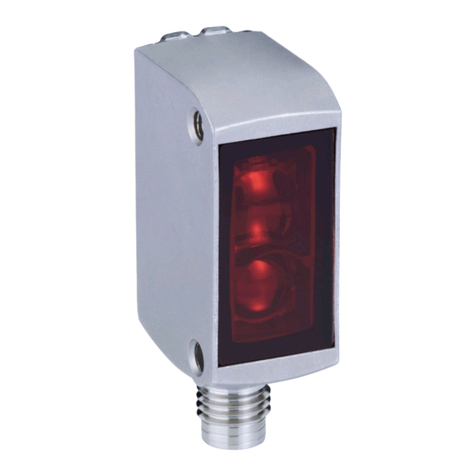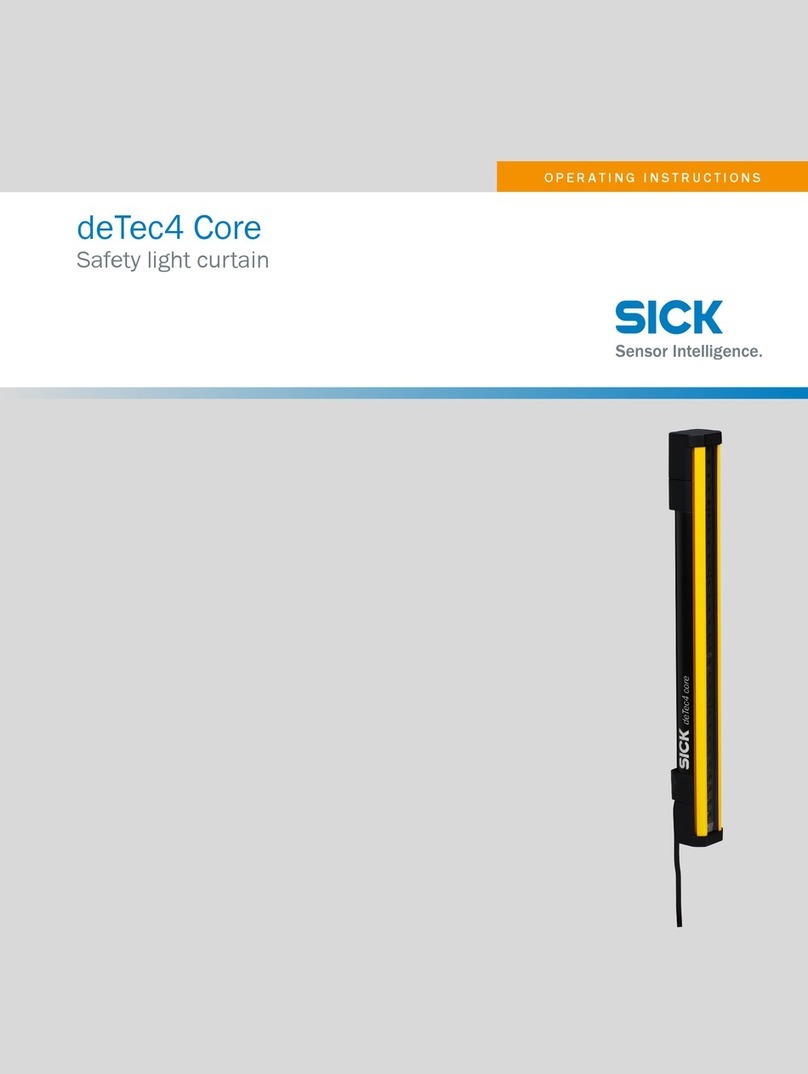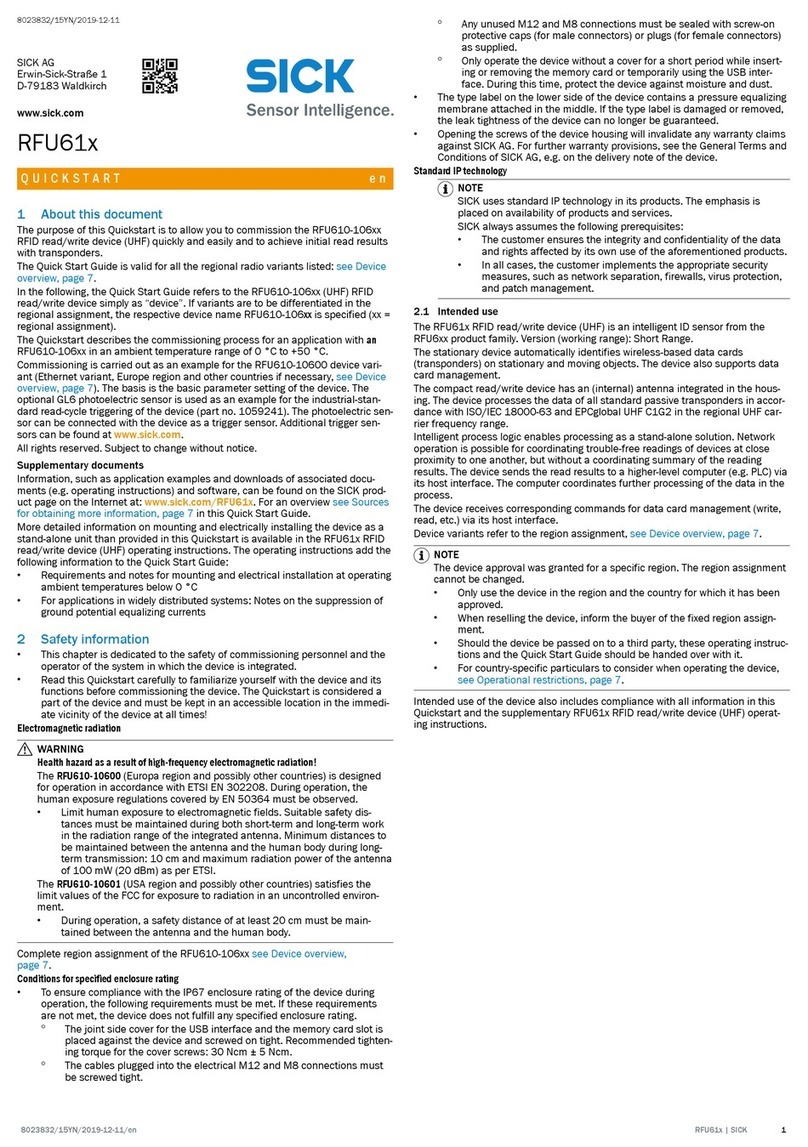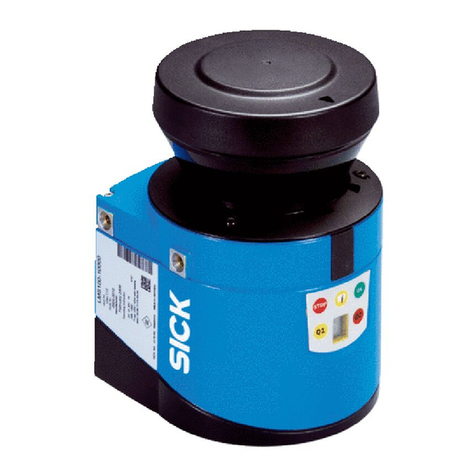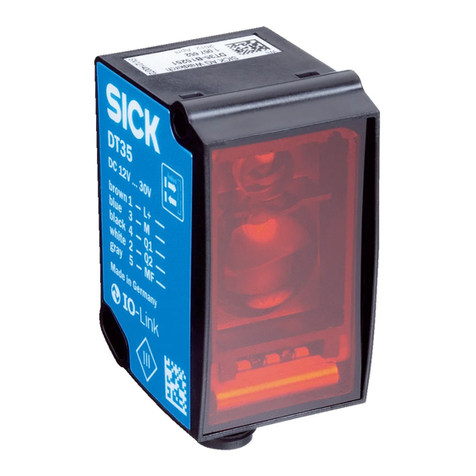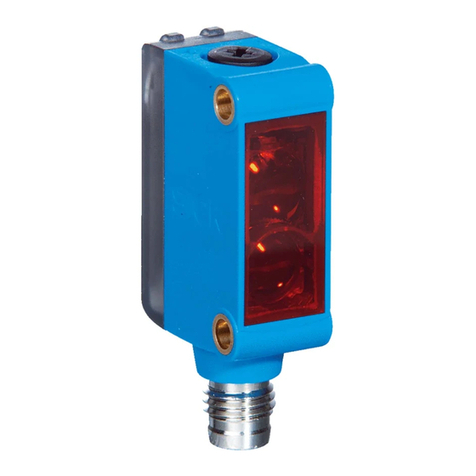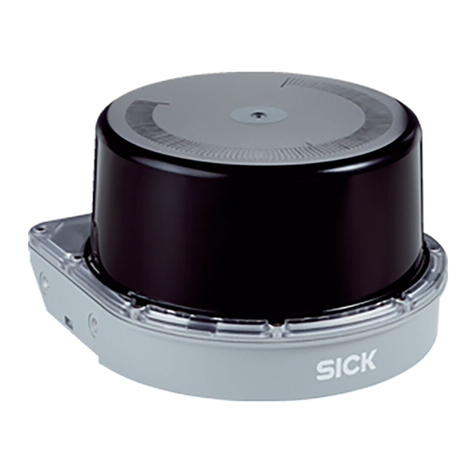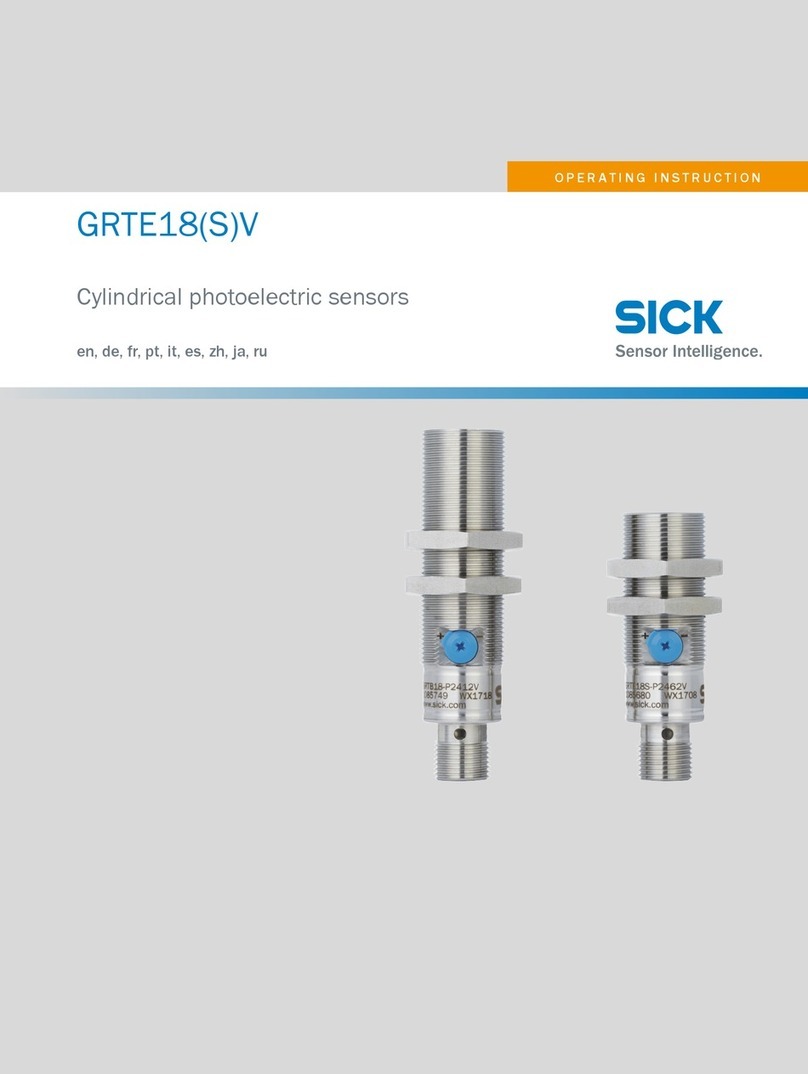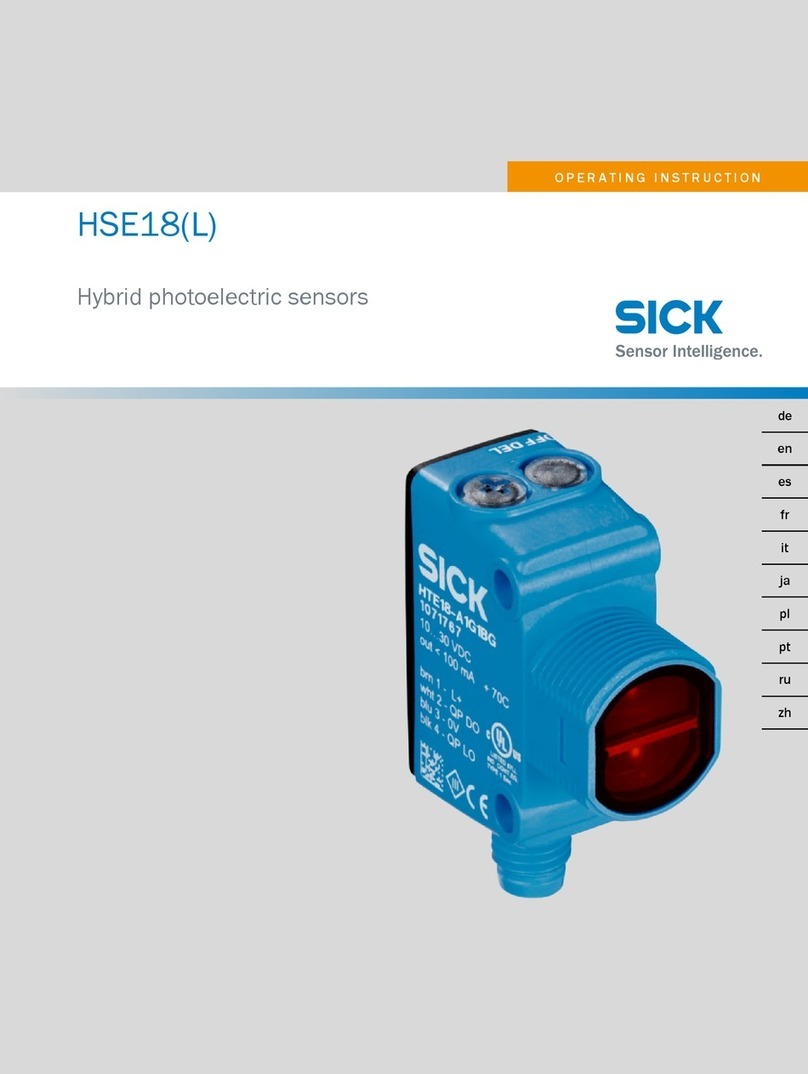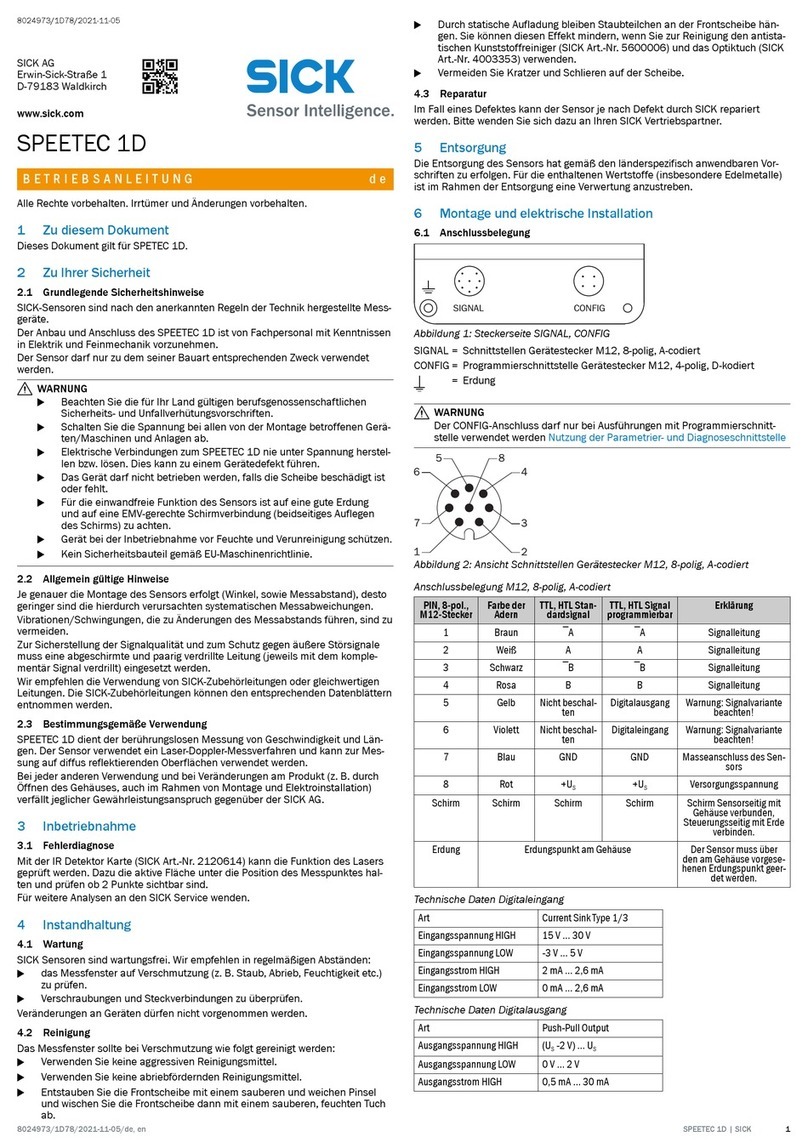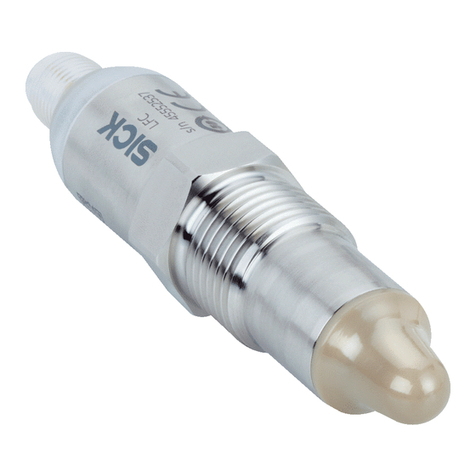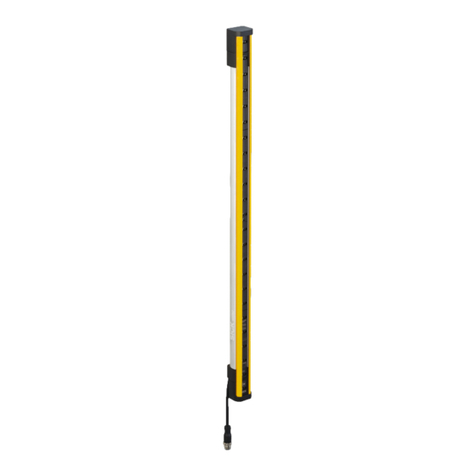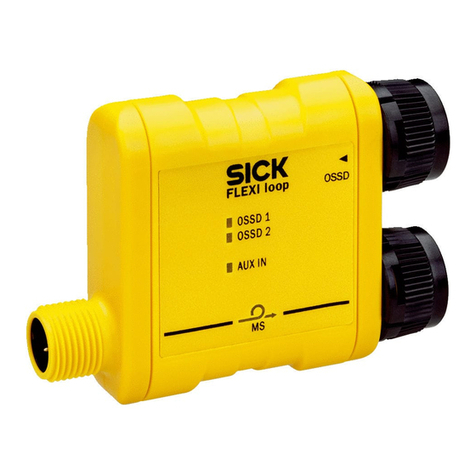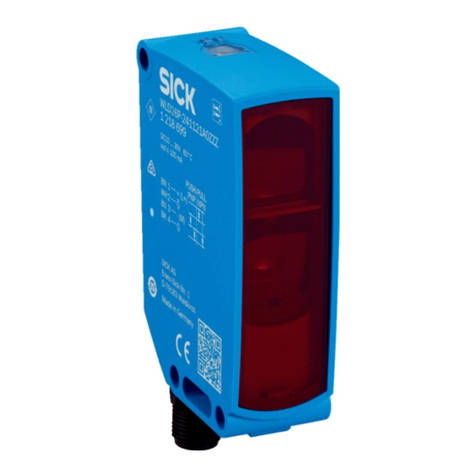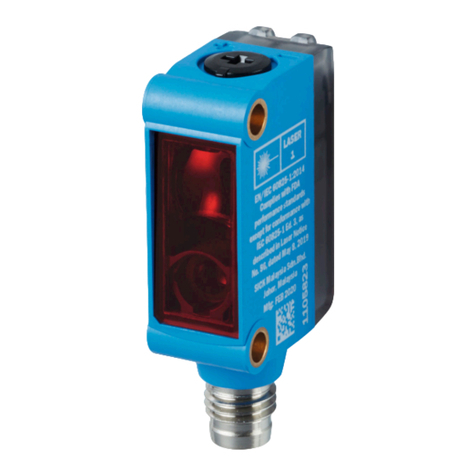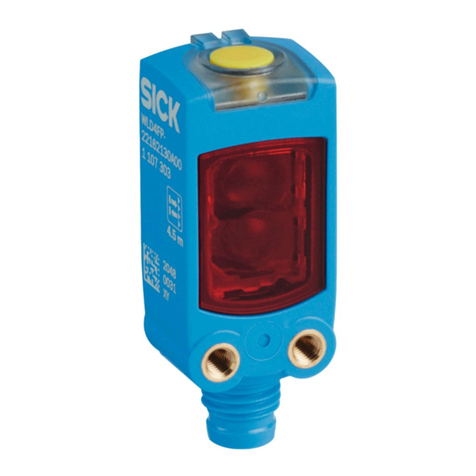
8.3.1 Defining the switching point for distance value (distance to
object)....................................................................................... 53
8.3.2 Defining the switching hysteresis for the distance value...... 54
8.3.3 Defining the switching point active status for the distance
value......................................................................................... 54
8.3.4 Defining the switching window for the distance value.......... 55
8.3.5 Defining the switching hysteresis for the distance value...... 55
8.3.6 Defining the switching window active status for the dis‐
tance value............................................................................... 56
8.3.7 Defining the switching point for the object speed value....... 56
8.3.8 Defining the switching point hysteresis for the object
speed value.............................................................................. 57
8.3.9 Defining the monitoring direction for the object speed
value......................................................................................... 57
8.3.10 Defining the switching point active status for the object
speed value.............................................................................. 58
8.3.11 Assigning a switching event to the service functions............ 58
8.3.12 Defining the active status for service functions.................... 59
8.3.13 Configuring the QA analog output.......................................... 60
8.3.14 Configuring the switching input.............................................. 60
8.3.15 Defining the active status for digital input............................. 61
8.4 Device menu group................................................................................... 61
8.4.1 Switching the laser on and off................................................ 61
8.4.2 Configuring the heater............................................................. 61
8.4.3 Defining the language............................................................. 62
8.4.4 Defining units of measure....................................................... 62
8.4.5 Adjusting the display contrast................................................. 62
8.4.6 Adjusting the display brightness............................................. 63
8.4.7 Defining the display orientation.............................................. 63
8.5 Communication menu group................................................................... 63
8.5.1 Configuring the serial interface.............................................. 63
8.5.2 Defining the RS-422 data transmission rate......................... 64
8.5.3 Defining the RS-422 data format........................................... 64
8.5.4 Setting the continuous RS-422 output.................................. 65
8.5.5 Defining the RS-422 output cycle time.................................. 66
8.5.6 Defining the RS-422 data protocol......................................... 66
8.5.7 Defining the distance value resolution for the RS-422 data
transfer..................................................................................... 67
8.5.8 Defining the speed value resolution for the RS-422 data
transfer..................................................................................... 67
8.5.9 Defining SSI coding................................................................. 67
8.5.10 Defining the distance value resolution for the SSI data
transfer..................................................................................... 68
8.5.11 Defining the IP addressing mode........................................... 68
8.5.12 Entering an IP address............................................................ 69
8.5.13 Entering a subnet mask.......................................................... 69
8.5.14 Entering a gateway address.................................................... 69
CONTENTS
8019329/2016-08-05 | SICK O P E R A T I N G I N S T R U C T I O N S | DT1000 and DL1000 5
Subject to change without notice
